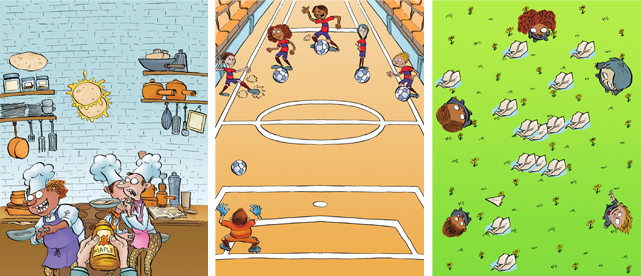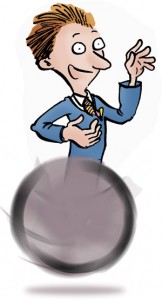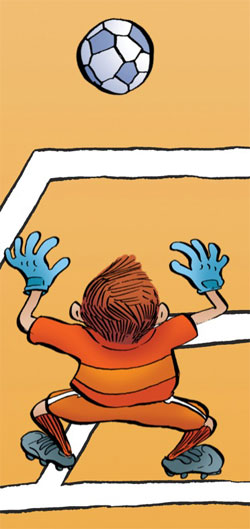Time Your Reactions

Have you played our Reaction Test games … how did you go?
Want to get faster? Great – read on!
To get faster at this kind of reaction test, it takes practice. The idea is to repeat the reaction so many times that it becomes almost automatic. See for yourself whether you can increase your speed with practice. On the game below click “Start” and then the “Stop” button as soon as you see the numbers appear on screen. Those numbers are the time it takes you to react. A tenth of a second is 100 milliseconds. How fast are you?
Download this game to play offline or use on your own website
(right click link and select “save link as”)

How your reactions work
Your brain is, as you know, the best thing since sliced bread (and many people say, considerably better). Not only that but it is the control centre for the body. Your reaction time is the time it takes for your brain to notice a signal, work out how to respond to that signal, send a message to the relevant muscles … and then for your muscles to kick into action. Written out in full like this, it’s amazing that your reactions are as fast as they are. So just how fast are they?
 A trained sprinter can respond to the sound of starting gun in a fraction of a second. But even a trained sprinter takes time to react. Currently race officials say that if a sprinter leaves the starting blocks less than a tenth of a second after the gun is fired then he or she ‘jumped the gun’.
A trained sprinter can respond to the sound of starting gun in a fraction of a second. But even a trained sprinter takes time to react. Currently race officials say that if a sprinter leaves the starting blocks less than a tenth of a second after the gun is fired then he or she ‘jumped the gun’.
We’re guessing that when you timed your reactions, you didn’t quite achieve a tenth of a second? For someone who is not a trained athlete, a reaction time of about two milliseconds (two tenths of a second) is very good. But what if your reactions in a game seem to be much slower and you just don’t seem to be able to speed things up, what’s going on there?
 The situation of responding to a starting gun is different to the situation you face in many reaction-test games. When the gun fires, there is no need to think – the only action is ‘run’.
The situation of responding to a starting gun is different to the situation you face in many reaction-test games. When the gun fires, there is no need to think – the only action is ‘run’.
In Pancake Panic the challenge is to notice a pancake lifting into the air and to click the mouse as soon as it does. But actually it’s a bit more complex than this because sometimes the pan just wriggles and sometimes it launches a pancake. That means you can’t click the mouse until you’re sure the pancake is in the air. Whenever a game presents a player with a choice about what to do it slows the brain’s ability to respond.
 The good news is that you can also get better at this kind of reaction game with practice.
The good news is that you can also get better at this kind of reaction game with practice.
And then, once you’ve demonstrated your dexterity and boosted your brain cells with a few hours of reaction-speed game-play we recommend that you flick through the other activities on this website.
If you’re the type who sometimes wonders, “If time travel is possible, surely we’d be awash with tourists from the future?” then this site has plenty for you.
 Finally though, we leave you with some quick tips to help you speed up your reactions.
Finally though, we leave you with some quick tips to help you speed up your reactions.
Scientists have shown that if you’re overtired, your reactions are slower – so maybe you can do better if you try the test again on one of your ‘better days’. And if you’ve been playing non-stop for a long time, take a break so that your brain is not fatigued.
Some people say a coffee or drink of coke helps – because the caffeine helps you to stay alert but be warned, others say it gets in the way of your ability to act smoothly and so you may end up ‘jumping the gun’ more frequently.
Some experiments to try for yourself:
Try fixing your eyes on one spot on the screen, just above where the numbers will appear. If you feel yourself becoming twitchy, listen to your own breathing while you wait. If that doesn’t help, can you come up with your own ‘best place to look’ and ‘best way to stay focused’.
Test out your forefinger and also your longest finger – can one option give you a better time than the others?